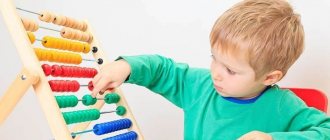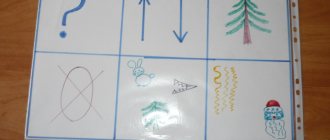Organization of work on environmental education in preschool educational institutions; consultation on the surrounding world on the topic
Organization of work on environmental education in preschool educational institutions
The role of nature in environmental education of preschool children
The basis of the content of children’s activities is the knowledge and skills that they develop in the process of getting to know the environment, in particular nature. Familiarization with nature is one of the main means of comprehensive development of preschool children. It is carried out in the process of formation in their minds of specific knowledge about the phenomena of inanimate and living nature.
Environmental education is a category that is directly related to the science of ecology and its various branches.
For the development of a child’s thinking and speech, a rich sensory experience is necessary, which he receives from the perception of various objects, the natural world, and social life.
Nature surrounds a child from an early age. I believe that this is a source of new knowledge of various natural phenomena.
The special role of nature in the development of logical thinking and coherent speech was emphasized by K.D. Ushinsky. He considered the logic of nature to be the most accessible, visual and useful for a child. It is the direct observation of the surrounding nature that “...will constitute those initial logical exercises of thought on which the logicality, the truth of the word itself depends, and from which logical speech and understanding of grammatical laws will then follow naturally.”
The ability to observe, developed in the process of learning about nature, gives rise to the habit of drawing conclusions, fosters the logic of thought, clarity and beauty of speech - the development of thinking and speech occurs as a single process.
Every acquaintance with nature is a lesson in the development of a child’s mind, creativity, and feelings.
The diversity, brightness, beauty of nature, the clarity of its connections and dependencies ensure that children can understand them and have a significant impact on the improvement of their mental activity. The child learns to find and correctly define in words causal and temporal dependence, sequence, interconnection of objects and natural phenomena, and learns to simply explain what is observed. Children’s ability to compare, compare, and draw conclusions is improved. This creates the prerequisites for the formation of such valuable qualities of coherent speech as reliability, evidence, consistency, and clarity. The child learns to reason, tell, describe.
In order for the development of a child’s thinking when becoming acquainted with nature to reach the highest possible level, the teacher’s purposeful guidance of this process is necessary.
The teacher must be able to correctly select educational material and think through the methods and techniques with which he can best convey its content.
The beauty and diversity of nature at any time of the year, the changes within each of them directly affect the emotional state of children, make them want to observe, ask, reason, and tell. Observing bright, colorful phenomena (leaf fall, snowfall, blizzard, thunderstorm), children want to understand them, ask questions and gradually come to understand them, they can explain why birds fly away in the fall, why puddles are frozen today, why the snow is melting, etc. . This creates favorable conditions for the development of logical thinking and speech.
During his stay in kindergarten, the child must learn to notice and highlight the characteristic features of the season, establish the simplest connections and dependencies between objects and phenomena, acquire fairly systematic knowledge about the life of animals and plants, then general tasks that are specified depending on the age of the children: gradually expand and become more complicated.
In the middle group, children should know what phenomena are characteristic of each season, highlight some signs of the season, for example: fruits ripen in the fall, birds fly away, leaves fall. At the same age, children can already establish the simplest connections, for example: between the appearance of vegetables and fruits and their degree of ripeness, between the properties of snow and the state of the weather, between people’s work and the time of year.
The teacher leads the children to understand the dependence of animal life on the season and the need to create certain conditions for plant growth.
Children in the older group should know and independently identify several characteristic signs of the season, the features of its beginning and end, and know the sequence of seasons; establish a relationship between the state of inanimate nature, flora, labor and life of people.
In the school preparatory group, children can already explain some causal, sequential and temporal relationships; compare not only sharply different, but also initially similar “adjacent” seasons, finding distinctive, similar and common features; when characterizing the season, they can identify signs of inanimate nature, flora and fauna, labor and life of people.
Thus, when cultivating an aesthetic attitude towards nature in a variety of activities, the teacher faces a twofold task. On the one hand, it is necessary to organize specific activities that directly expose preschoolers to the beauty of nature. On the other hand, one must be able to combine any activity with knowledge of the aesthetic properties of the environment, including those that, due to their specificity, form other than aesthetic attitudes towards the outside world. For example, to develop the ability to perceive the beauty of nature, it is important that cognitive tasks are posed quite often. Pedagogical situations that stimulate the aesthetic perception of nature must be created regularly.
Familiarizing children with the nature of their native land in the pedagogical process of preschool educational institutions
Nurturing children's correct attitude towards nature and the ability to carefully handle living beings can be fully implemented in the preschool period only if the system of work in kindergarten is combined with the impact on children in the family.
To create and improve a developmental environment in the family and ensure adequate interaction between adults and children, you can work with parents.
Establish contact, mutual understanding and identify the needs of parents in matters of raising children. First of all, in order to establish contact and mutual understanding with parents, it is necessary for each teacher to assess what capabilities he has to help parents in raising their children. In addition, it is important to think about what kind of help parents would like to receive from the kindergarten. This way, teachers can identify a preliminary “picture” of interaction and compare it with their capabilities.
It is necessary to take into account that parents may not know all the capabilities of teachers in solving the problems of raising children; therefore, they will need to be disclosed to parents. In this regard, teachers can offer parents a questionnaire or conduct a conversation with them. This is possible when holding parent meetings, organizing messages or lectures.
Having provided parents with information about the relevance of environmental education for the development of the child and his future life, teachers need to introduce parents to the system of work of the preschool institution in this direction. Parents should know how the child’s life and activities are organized during the day.
The entire objective and social environment at home and in the family influences the development of the child.
These include TV shows for children, keeping indoor plants and pets.
The ability to see and understand the state of another living being is a subtle respect for the child’s soul, depending on interest in a plant or animal, on the degree of development of observation and moral feelings. This is where responsibility for all living things begins.
By nurturing children's interest in the mysterious world of plants, children get acquainted with specific types of indoor plants, learn their names and characteristic features. They learn that they are living beings and they have needs for certain living conditions: that all plants need nutritious soil (earth), water, light, heat, air. The child, with the help of an adult, learns that without these conditions they cannot remain alive. A person creates these conditions for them: he plants them in a pot with soil, waters them regularly, sometimes feeds them with fertilizers, puts them in a bright place, and does not allow them to cool.
Houseplants have a certain structure: they have a root, a stem, leaves, and sometimes flowers. The root (and in some cases the stem) is in the ground; the root absorbs water and nutrients from it, breathes air, and keeps the plant from falling. The stem carries nutrients and moisture to the leaves and flowers. Children will learn that leaves are most often green, there are many of them, the plant absorbs light with them, breathes, cleaning their leaves from dust, first together with an adult, and then independently, the preschooler will be able to provide effective help to green friends, the child will learn that plants need all organs, Therefore, they must not be damaged and must be cared for carefully. People specifically breed indoor plants for aesthetic pleasure, to make the room beautiful. Each of them is beautiful in its own way: leaves, stems, flowers. All plants are beautiful if they are in good condition, grow and bloom. The beauty of indoor plants is achieved by creating good conditions for them. Indoor plants may not feel well (in this case, they look bad) if their needs are not met: pale color of the leaves, elongated stems occur with a lack of light; dry out when there is a lack of moisture; wither and die due to frostbite; do not grow (do not produce new leaves or shoots), do not bloom if there is a lack of nutrients in the soil.
Indoor plants have different needs, their structure is adapted to different living conditions. Moisture-loving plants have thin leaves and should be watered frequently. Drought-resistant plants have fleshy leaves and thick stems that store moisture and should be watered rarely. Light-loving plants are bright green in color and have a bright pattern; they should be placed on a window, closer to the light. Shade-tolerant plants most often have dark-colored leaves; they can be placed near a window, not far from it.
Children develop cognitive interest - they independently examine plants, willingly participate in observations, make sketches, and ask questions. Children develop aesthetic senses, the ability to notice and appreciate the attractive qualities of indoor plants: the beauty of the shape and color of leaves, climbing stems, the beauty of a flowering plant. Children willingly participate in replanting plants, notice and react emotionally to the sprouts, buds, and flowers that appear. The perception of indoor plants as living beings also develops: children may notice their unfavorable condition (withered leaves, pale color, elongated stems, etc.); detect insufficient conditions for their life (dry soil, low light). Children sympathize with the plant: they inform adults about noticed problems, willingly carry out instructions for caring for the plants, and help with their replanting.
If there is a dog or a cat in the family, then children get an idea about the cat, dog, features of appearance and behavior. They learn more about the life of these animals, they understand that the life of these animals is closely connected with humans. Children should know the appearance features of some wild animals, their movement, habits, what and how they eat, where they live, whether they bring benefit or harm to humans; gain an understanding of keeping and feeding domestic animals.
It’s good if the child is taught to take the animal’s rest into account. Your four-legged friend is sleeping, and you don’t need to disturb him; when he wakes up, you can play with him. Observing sleeping animals is also interesting: the cat takes the most unusual poses, dogs often have dreams, and they squeal, grumble, and move their paws.
Since the child is constantly in the world of play and knows how to handle animals well, he nevertheless includes them in his games as partners, not always taking into account that they are alive.
Of course, the correct treatment of a child with an animal in itself will not solve all the problems of upbringing. But there is no doubt that communication with living nature plays an important role in the development of a little person’s personality.
Children show interest in the life of pets, willingly observe them, their behavior, ask questions, listen to stories and fairy tales. They understand their desires and needs, show a willingness to care for them, know how to treat them correctly (stroke, play, talk affectionately), and reflect these impressions in games and activities.
Having analyzed the experience of teachers in environmental education of preschool children, we consider it possible to present the following methodology of environmental education in preschool educational institutions:
— Creation of conditions for environmental education in kindergarten: a developmental environment, a fund of methodological, visual and illustrative materials.
— Organization of “ecological spaces” in the kindergarten premises: group nature corners, winter garden, mini-greenhouse, nature room (salon). Selection and placement of plants in accordance with their biological characteristics.
— Organization and equipment of “ecological spaces” on the kindergarten site: nature playgrounds, “corners of untouched nature” (forests, meadows, wastelands). Ecological trail in the kindergarten area: equipment, use in the pedagogical process.
— Human labor as an environment-forming factor in the life of plants and animals. Creating working conditions for children and adults in the natural area of the kindergarten. Growing and harvesting vegetables.
— Observation is the leading method of environmental education.
— The essence of observation as a sensory method of understanding nature. Leading role, ecological nature of the content of observations. Knowledge in the process of observations of the morphofunctional characteristics of living beings, their relationship with the environment, the diversity of species, the processes of growth and development of plants and animals.
Psychological and pedagogical justification for the ecological content approach to observation.
— Observations in everyday life are the leading form of introducing children to the surrounding nature. Requirements for conducting observations. Cycles of observations of natural objects: determining the content of individual observations, constructing their sequence, planning. Development of cycles of observations of seasonal phenomena, growth and development of plants in the green zone of the kindergarten.
— Organizing and conducting experimental work with natural objects of the Native Land, modernizing activities with them. Observing changes in natural objects, tracing and discussing their relationships with the environment.
— Nature calendars and their role in environmental education. A week-long method of introducing preschoolers to seasonal natural phenomena; working with the calendar in different age groups of kindergarten. Recording the growth and development of a plant in a calendar. Winter feeding of birds, its environmental significance. Calendar for observing wintering birds and working with them in different age groups.
— Environmental education in classes, during excursions, and holidays.
— Various types of classes to familiarize children with the nature of their native land: primary educational, in-depth cognitive generalizing, complex. The leading role of verbal methods in teaching in the classroom. Formation of generalized ideas about nature. Types of visualization, its role and place in natural history classes. Children's natural history literature, its use for environmental education.
— Children's holidays with environmental content, development of scenarios, holding. Participation of preschool children in environmental activities.
Environmental education of preschool children
The research direction of work is carried out within the framework of the following activities: project activities, excursions into nature, tourist walks, phenological observations, experiments that contribute to the development of thinking, analysis of the results obtained.
Ways to implement a system of environmental work in preschool educational institutions: - creation of conditions (greening of the developing environment, software and methodological support); — increasing environmental awareness of teachers; — updating the content, forms and methods of working with children; -environmental education of parents. Systematic work with personnel, understanding of the significance of environmental problems - all this allows us to carry out extensive targeted activities with children in this direction. Problems of environmental education are regularly discussed at consultations, seminars, and teacher councils.
Environmental education of preschoolers can be considered as a process of continuous education and education of parents, aimed at developing an environmental culture of all family members. Working with parents is no less important and more difficult than working with children. We especially pay attention to the joint activities of children and parents, since it is through activity that a person influences the world around him. In addition, it promotes cooperation, emotional, psychological rapprochement between a child and an adult, gives the child the opportunity to feel like an “adult” (during a hike or environmental action), and allows the adult to better understand the child. We hold exhibitions of joint drawings of posters, models, crafts from waste materials, photographs, we invite parents to participate in the design of nature centers, laboratories, libraries, and in environmental actions (cleaning the territory of the kindergarten and around it, planting trees, making birdhouses and feeders, etc.). d.) Preschoolers are very inquisitive, they look closely at the surrounding reality with interest, strive to penetrate its secrets, therefore we use active forms and methods of learning - experimentation, experimental work, walks, excursions, etc. The system of working with children includes: -seasonal thematic planning of direct educational activities; — creation of an ecological and developmental environment (nature centers, nature laboratories, ecological trail); -organization of joint activities (holidays, observations, ecological path, apothecary garden, vegetable garden, work in nature); - reading fiction; -growing greenery in the winter-spring period (“garden on the window”); -game activity as the main form of children’s activity; -ecology of health (breathing exercises, music therapy, physical activity, hardening, environmental and psychological training); -creation of a system of environmental work (author’s development of classes, work with parents, with public organizations, methodological and information support, etc.).





